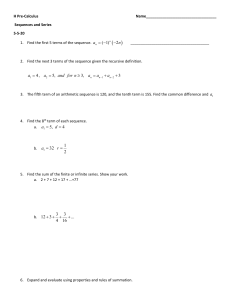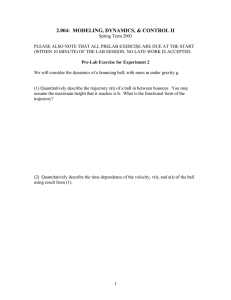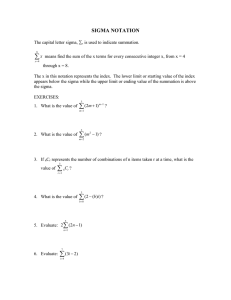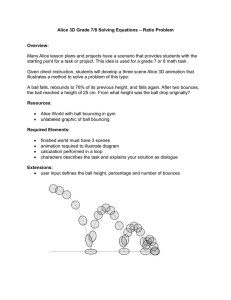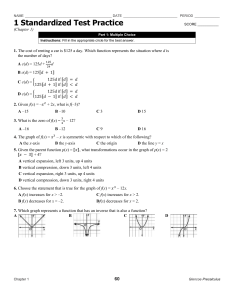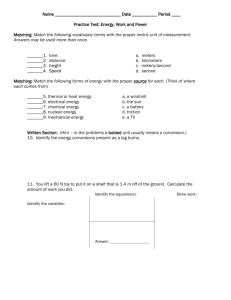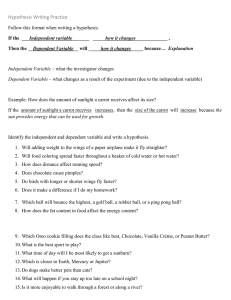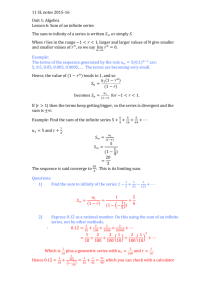Mechani
advertisement
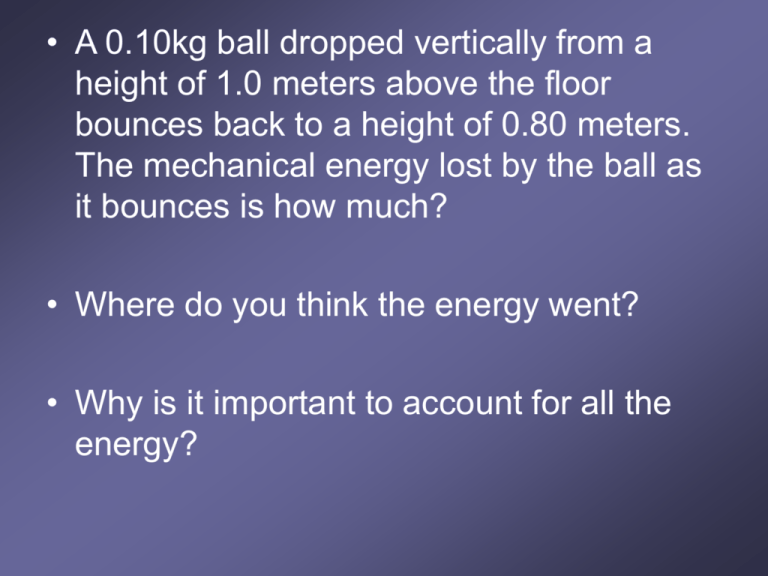
• A 0.10kg ball dropped vertically from a height of 1.0 meters above the floor bounces back to a height of 0.80 meters. The mechanical energy lost by the ball as it bounces is how much? • Where do you think the energy went? • Why is it important to account for all the energy? Introduction • Purpose • Hypothesis – Research the force of a bouncing ball. • Physics concepts pertinent (related) to the experiment 1. Finish calculating the PE, KE, and % loss. 2. Create a bar graph with ball type on the xaxis and percent energy loss on the y-axis. Thinking time • What did you learn? (2 serious ideas) • What could you do to improve? • Why would you be confident in your methods? Conclusions • The three think time questions • RESTATE hypothesis – what did your results show to support or detract? • Any final thoughts Mechani-what? • Please revisit your pulley lab data sheet. Distance of Force (m) Number of Supporting Strands Work Input (J) MA Efficiency 0.1 0.50 1 1.0 98% 0.22 0.59 2 1.8 83% 0.22 0.57 2 1.9 86% 0.32 0.54 3 2.9 90% 0.41 0.53 4 3.8 92% Mechani-what? • Which pulley arrangement was the “easiest” to lift? • Give your definition of “easiest”. Mechani-what? Output force Input force W=F*d If d goes up, what goes down? What happens to the total work as a result? Conclusion? • Mechanical advantage has everything to do with spreading (multiplying) the force over a longer distance, and nothing to do with lessening the work.

